Share via:
Brisket, often chosen for barbecues and family gatherings, is a tough cut of beef that demands patience and skill. Achieving the perfect brisket internal temperature is the key to transforming this tough piece of beef into a tender, juicy, and flavorful delicacy.

While many sources suggest that anything between 190°F and 203°F is the “sweet spot” for brisket, we’ll explore why 205°F is often hailed as the ultimate target temperature.
In this comprehensive grillcuisines.com guide, we’ll delve into:
- The science behind brisket cooking temperatures,
- Why Should Brisket Internal Temp 205 and 205°F is the magic number,
- And essential tips and insights to master the art of brisket smoking.
Smoking Brisket Internal Temperature: 195 or 205 F
Brisket Temperature Debate
The minimum internal temperature of brisket is 190 F which is safe for eating. Other than that, there is much debate on what is the correct brisket internal temp at which it is done completely.
Some cooks swear by reaching an internal temp of 210 F, whereas others state to pull it out when it reaches 195 F.
The best method of knowing when brisket is done is to check for its doneness through a thermometer, probes, and the poke test.
The optimum brisket internal temp when done lies anywhere between 195 F to 210 F. Meat continues to cook even after being taken out of the smoker, hence, the key is to take it out at a minimum internal temp for brisket of 195 F and let it rest to reach the desired temperature of 210 F.
Related > > How long to let brisket rest in cooler overnight
There is no set temperature that’s considered “correct” for cooking brisket. It often depends on the type of meat, how long it’s been aged, and the desired outcome (e.g., tender, moist, or dry).
Understanding Brisket Anatomy
Before we dive into the nitty-gritty of brisket temperatures, it’s important to understand the anatomy of this cut.
Brisket is a highly-prized cut of beef known for its robust flavor and undeniable tenderness when cooked correctly.
Brisket comes from the chest of the cow, a hard-working muscle responsible for moving the front legs of an animal that can weigh nearly 1,400 pounds on average.
Due to its strenuous use, the brisket is loaded with connective tissue, primarily collagen, and has distinct sections: the flat and the point.

- The Flat: The flat is a leaner portion of the brisket with minimal interior marbling and a thick layer of fat on top.
- The Point: The point has more interior fat and marbling. It’s where the famous burnt ends come from.
These two sections have different characteristics, with their internal muscle fiber grains running perpendicular to each other.
Selecting the Perfect Brisket
For a juicy and tender brisket, it is important to choose the right cut. When shopping for brisket, you will come across two primary cuts: the “packer” brisket and the “flat” brisket.
- Packer Brisket: This cut includes both the point and flat sections of the brisket, still covered by a layer of fat. Packer briskets are large and can weigh anywhere from 10 to 20 pounds before trimming. They offer the most flavor and are ideal for extended smoking sessions.
- Flat Brisket: The flat, as the name suggests, is a leaner and more manageable cut of brisket. It contains less fat and typically weighs between 6 to 10 pounds. While it’s easier to handle, it requires precise cooking to prevent dryness.
While some people choose to smoke a whole packer brisket, separating the flat and the point can provide more control over the cooking process, resulting in better results.
The Role of Marbling
When selecting your brisket, pay close attention to the marbling – those fine streaks of intramuscular fat. Marbling enhances flavor and juiciness, so choose a brisket with good marbling for the best results.
Why Brisket Internal Temperature Matters
The key to achieving tender, mouthwatering brisket lies in breaking down the tough connective tissue and rendering the fat inside the meat.
This process requires a low and slow cooking approach. Smoke also plays a crucial role in enhancing the flavor of the meat.
Now, let’s address the burning question: Why Brisket internal temp 205°F?
1- Collagen Breakdown:
The connective tissue in the brisket, mainly collagen, starts breaking down around 190°F. The magic happens when collagen converts into gelatin, resulting in a mouthwateringly tender brisket.
For collagen to become fully rendered and transform into gelatin, you need to reach an internal temperature of around 200°F. At 205°F, you ensure that this breakdown is complete, resulting in an incredibly tender brisket.
To trigger this transformation, you’ll need to hit specific temperature ranges within the meat:
- The Stall: Between 150°F and 170°F, you might experience what’s known as “the stall.” During this phase, the internal temperature plateaus or even drops slightly as collagen breaks down, enhancing tenderness and juiciness. Patience is key during this stage.
- The Ideal Temperature Range: The consensus among many pitmasters is that the best internal temperature for brisket is 195°F. After removing the brisket from the smoker, it continues to cook due to thermal carryover, increasing the internal temperature by about 5-10°F. By targeting 205°F, you account for this carryover effect, giving you that perfect tenderness. So aiming for 195°F provides a safety buffer against overcooking.
- Avoiding Undercooking and Overcooking: Cooking brisket to a lower temperature than 195°F can result in toughness and chewiness. Conversely, exceeding 210°F can lead to dry and overcooked brisket, robbing it of its juiciness and tenderness.
How To Monitor Internal Temperature Of Tender And Juicy Brisket
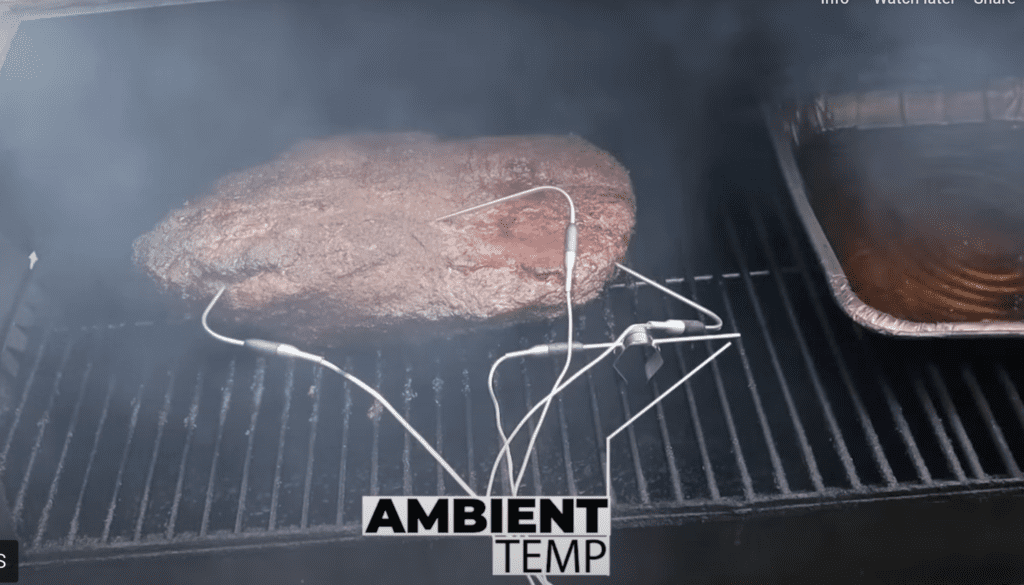
To master brisket, you’ll need a reliable meat thermometer. Insert the probe into the thickest part of the brisket, avoiding contact with bones, and aim for the center of the meat.
Some smokers have dual probes, allowing you to monitor both the flat and point sections simultaneously.
Remember, the internal temperature of a perfectly cooked brisket typically falls between 190°F and 205°F. Consistency is essential, so check the temperature at multiple spots to ensure even cooking.
The Art of Smoking Brisket
Let’s talk about the smoked brisket cooking temperature and time based on its size. Here is a handy chart that you can follow for perfect brisket every time.
| Size | Smoker Temperature | Smoking Time | Internal Done Temp |
| 5 – 10 lbs. | 225 F | 5-7 Hours | 205F |
| 12 – 18 lbs. | 225 F | 10-12 Hours | 205 F |
Now that you understand the science behind brisket internal temperatures, let’s find out how to achieve that mouthwatering smoky flavor and tender texture of brisket that requires a combination of patience and skill.
The type of wood you use for smoking plays a significant role in determining the flavor profile of your brisket. Popular woods for smoking include oak, hickory, mesquite, and fruitwoods like apple and cherry.
For a perfect smoky flavor, ensure that the smoke is thin and blue. Thick, white smoke can produce a bitter taste, indicating that the wood is damp. In such cases, increase ventilation to burn the wood more quickly and replace it with dry pieces.
Smoking Techniques
Smoking brisket is an art that requires precision and dedication. Here are some essential tips for mastering this technique:
- Low and Slow: Patience is the cornerstone of great brisket. Slow cooking at lower temperatures, typically around 225°F, allows the collagen to break down gradually, resulting in the perfect tenderness and texture.
- Proper Thermometer Placement: To ensure accurate temperature readings, insert the meat thermometer properly. Position it flat in the brisket, inserted from the side rather than the top. The probe should reach the thickest part of the meat, away from the fat.
- Keep It Humid: Placing an aluminum pan with water beneath the cooking grate helps maintain a humid smoking environment. This is essential to slow down evaporation, collagen breakdown, and fat rendering. A moist atmosphere also enhances smoke penetration.
- Practice and Patience: Smoking the perfect brisket may not happen on your first attempt. Factors like meat weight, cut, and smoker type can vary, affecting your results. Don’t be discouraged; practice and patience will yield delicious results over time.
Avoiding Common Pitfalls
Meat keeps cooking even after being removed from the smoker. It is important to remove it beforehand when it is about 10 degrees less than your required Brisket internal temperature. There are varying views of when brisket is done, but for an idea, if you are aiming for 205 F internal temperature of brisket then remove it when it reaches 195 F.
Now that we’ve established why 205°F is the sweet spot for brisket, let’s discuss common pitfalls associated with undercooking and overcooking:
Undercooking Brisket:
- Undercooked brisket, even if it reaches a safe internal temperature by USDA standards, will be chewy and tough to eat.
- The tough internal tissue and fat won’t have had sufficient time to render, leading to a less-than-ideal texture.
- While you’ll still have a smoky flavor, the brisket won’t be as tender as it should be.
Overcooking Brisket:
- Overcooking brisket can also lead to problems. The meat may fall apart easily, but the brisket will be dry and crumbly.
- Too much heat for too long can result in a loss of moisture, which no one wants in their prized brisket.
Avoid bitter Brisket:
When burning the wood chips and preparing the smoker, make sure that the wood chips are not damp and allow enough air inside to help in quicker burning of wood and reaching higher temperatures. Experts say that thick and white smoke means that the brisket will taste bitter and the smoke should be thin to avoid that mistake.
Managing the Brisket Stall
As you monitor the internal temperature of your brisket, you’ll likely encounter the infamous “stall.” The stall happens when the meat’s internal temperature plateaus, typically between 150°F and 170°F. During this phase, moisture evaporating from the meat’s surface counteracts the heat from the smoker.
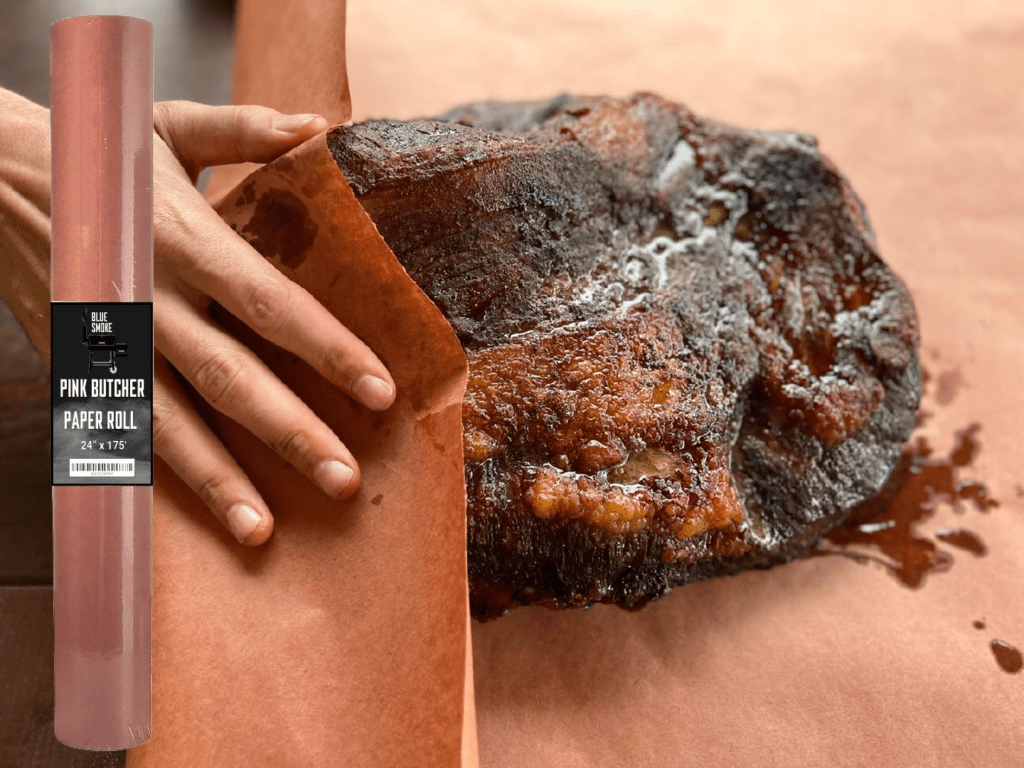
Combat the stall by tightly wrapping your brisket with either food-grade pink butcher paper or aluminum foil.
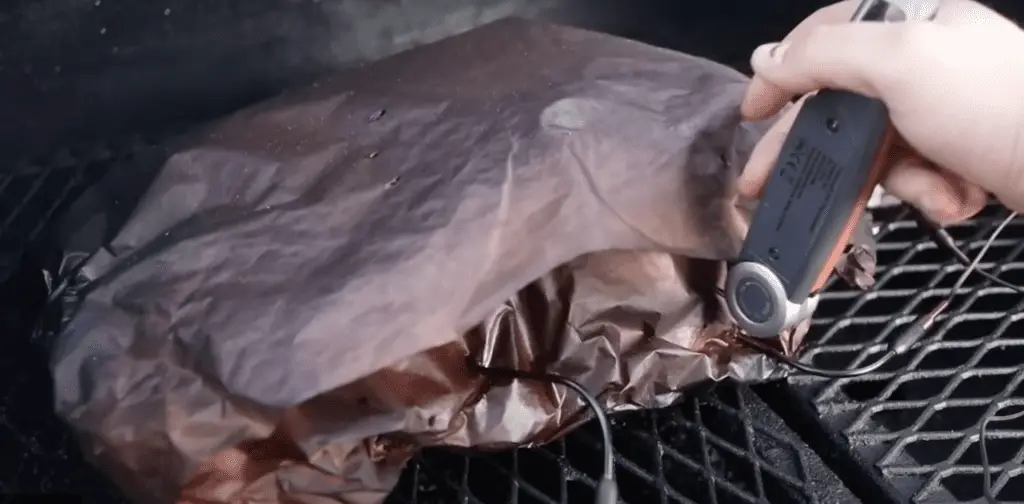
This method, known as the “Texas Crutch,” traps moisture inside, expediting the cooking process while preserving tenderness.
Related > > What temp does brisket stall
Beyond Internal Temperature: Additional Indicators of Brisket Doneness
While internal temperature is a critical factor, it’s not the sole indicator of brisket doneness. People use various methods to confirm that their brisket is ready to serve without relying solely on the thermometer.
Probe Test
The probe test involves using a probe, knife, or toothpick to check if the brisket is cooked in the middle. If the probe slides in and out easily with minimal resistance, it’s a sign that the meat is done.
The texture of a brisket should resemble slicing soft butter.
Poke Test
Similar to the probe test, the poke test entails inserting a fork into the meat and twisting it. If the fork twists with little resistance, indicating tenderness, the brisket is ready.
Tug Test
A tug test is a tactile approach. Cut a thin slice of brisket and hold each end. If the meat pulls apart easily, then it’s ready for eating.
While these tests provide valuable insights into brisket doneness, using a meat thermometer remains the most reliable approach, especially for beginners.
Why Do Different Pitmasters Recommend Different Temperatures?
One of the intriguing aspects of brisket is that each cut is unique, with varying amounts of marbling and thickness.
This individuality means that the exact final temperature may differ by a few degrees for each brisket to reach optimal tenderness. Pitmasters may suggest different temperatures because:
- Some prefer to push the brisket to the upper end of the temperature range to ensure it’s tender.
- Others aim to avoid overcooking at all costs and pull the brisket as soon as possible, resulting in a slightly lower final temperature.
As long as your brisket’s internal temperature reaches a minimum of 190°F and the meat is probe-tender, you’re on the right track. The key is to find the balance that works best for your specific brisket.
Extra Tips for Brisket Perfection
1- Use a Quality Thermometer
Invest in a reliable meat thermometer like the ThermoWorks Thermapen ONE or the ChefsTemp FinalTouch X10 to accurately gauge tenderness. Insert the probe into the flat, the point, and the thickest part of the brisket, ensuring it slides in like softened butter.
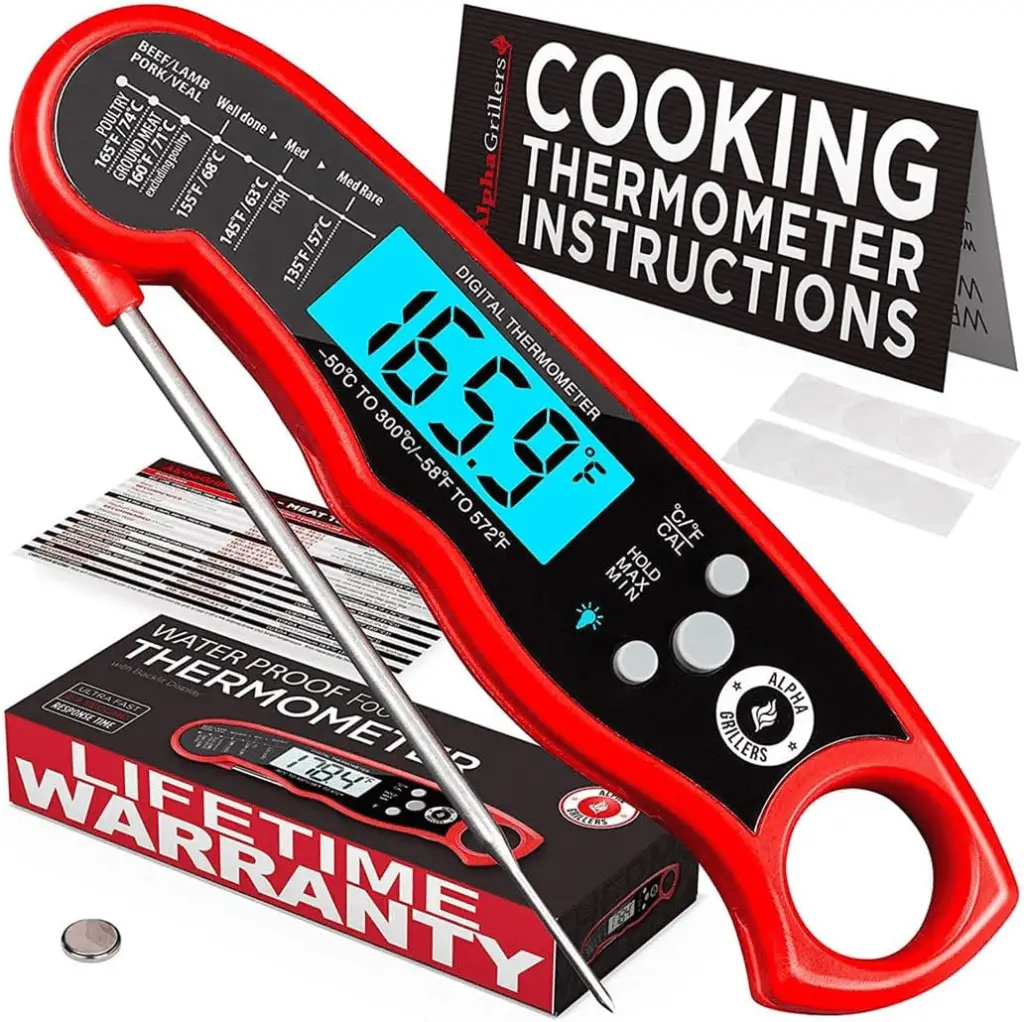
2- Consider Separating the Flat and Point:
To achieve even better results, separate the flat and point before smoking. This allows you to manage each section’s cooking time, ensuring both are perfectly cooked.
3- Trim the Brisket
The brisket is trimmed to create a smooth and uniform cooking surface. Trim it when it is cold for an even cutting.
The fat side is placed down and the hard fat on top is trimmed to expose the hard muscle underneath which needs the most cooking exposure. Turn the meat around and flatten the surface by trimming off any big chunks of fat on the meat.
4- Rest Your Brisket:
After reaching that magical 205°F, don’t rush to slice your brisket. Let it rest for at least an hour to allow the juices to redistribute, ensuring a moist and flavorful result.
5- Experiment with Rubs and Wood
The choice of rubs and wood for smoking can significantly impact the flavor of your brisket. Try different combinations to discover your signature taste.
The brisket should be seasoned 24 hours before the cooking process starts to make sure the flavor reaches the insides of the meat.
You can use any brisket rub, but the classic salt and pepper rub works great as well. Use oil to bind the seasoning all over the meat. Cover it and place it in the fridge for 24 hours. A pro tip is to take it out 1 – 2 hours before cooking so it can come down to room temperature for even cooking.
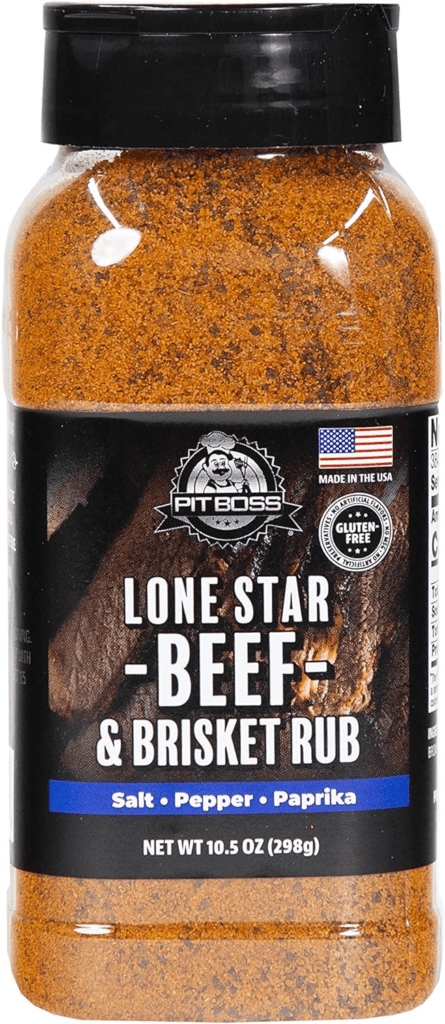
6- Keep Records
Maintain a brisket journal to document your cooking process, including temperatures, times, and any adjustments you make. This will help you refine your technique over time.
7- Slicing the Brisket
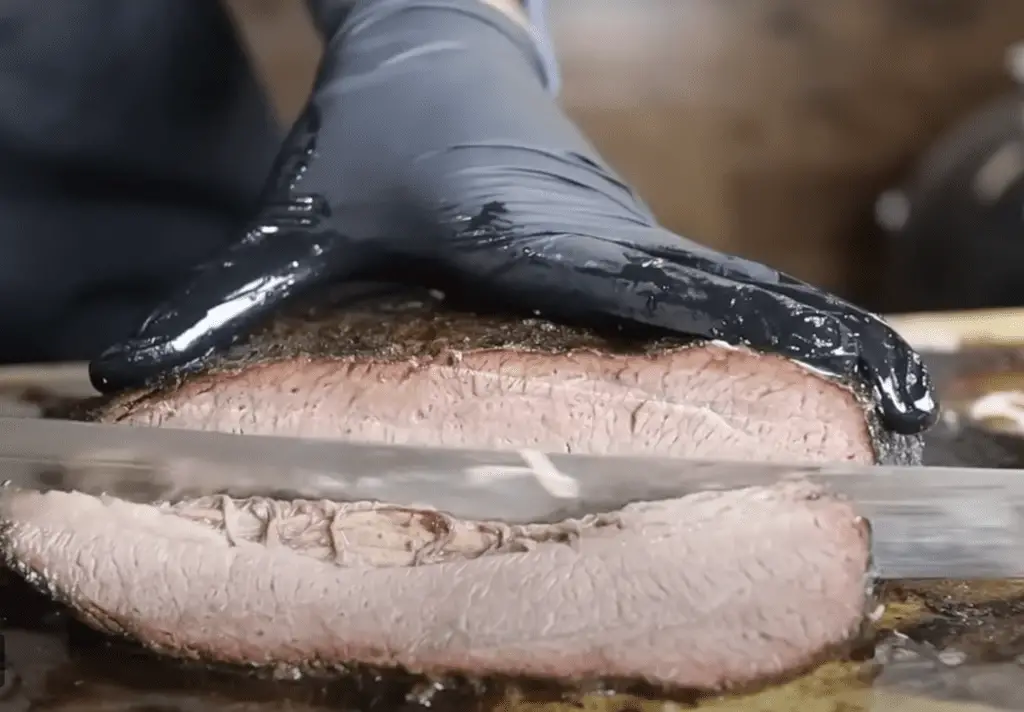
In order to make the brisket meat less hard to bite into, it is important that you slice the brisket against the grain.
Make note of the direction of the muscle fibers and cut in opposite directions to make it easier to eat.
Final Thought: Brisket Internal Temp 205
The ultimate goal for smoked brisket is for it to be juicy and tender when you pull it. Follow the guide to smoked brisket internal temp and you will make sure to have a delicious meal ready for your family and friends.
To accurately check the internal temperature of your brisket, invest in a digital meat thermometer. A lot of wifi electric smoker models come with a built-in meat probe that makes it super-easy to check the food’s temperature without opening the smoker or having to constantly watch it.
I am a writer, editor, and publisher of Grillcuisines.com – an online blog dedicated to sharing grilling tips, accessories, and recipes to encourage more people to get outside and grill.
I’m off to find out the different types of grill foods, their seasons, and how to conduct outdoor cooking properly. I’ll also show you some of my grill-worthy cooking tools & accessories!


